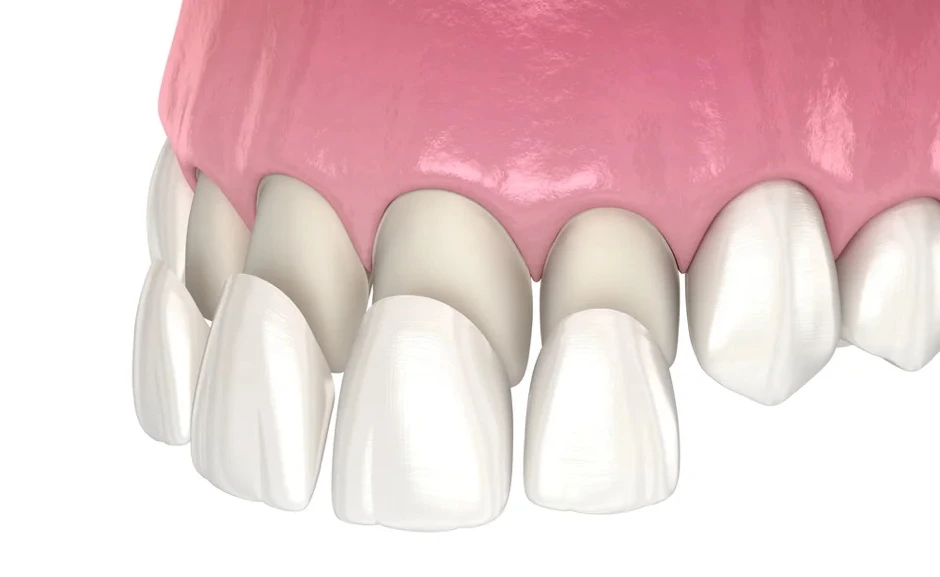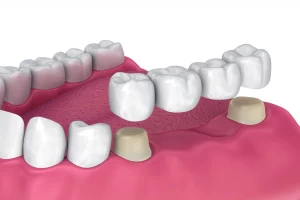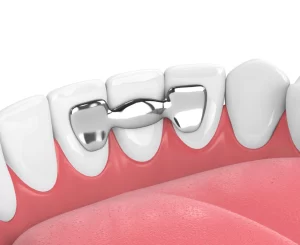
A damaged or missing tooth can make everyday tasks like eating and smiling feel uncomfortable. Two of the most common ways to fix this are dental crowns and dental bridges. These treatments solve different problems, but both can restore function and improve the look of your smile. When comparing dental crowns vs dental bridges, it helps to understand how each one works and which suits your needs best. If you’re in Cortlandt, NY, your dentist can guide you toward the right choice based on your tooth structure, goals, and long-term care plan.
What Is a Dental Crown?
A dental crown is a cap that covers the entire visible part of a damaged or weakened tooth. Dentists use crowns to protect, strengthen, and restore teeth that can’t function properly on their own.
When You Might Need a Crown
-
You have a large cavity that a filling can’t fix
-
Your tooth is cracked, chipped, or broken
-
You’ve had a root canal and need to protect the remaining structure
-
You want to improve the appearance of a discolored or misshaped tooth
-
You’re completing a dental implant with a crown on top
Crowns are made from porcelain, ceramic, or metal. Your dentist will choose a material that matches your bite strength, tooth position, and aesthetic goals.
What Is a Dental Bridge?
A dental bridge fills a gap left by one or more missing teeth. It connects artificial teeth (pontics) to natural teeth or dental implants on either side of the space. The supporting teeth are often covered with crowns to anchor the bridge securely.
When a Bridge Might Be Right
-
You’ve lost one or more teeth in a row
-
You want a fixed solution instead of a removable partial denture
-
You have strong teeth on both sides of the gap
-
You prefer a quicker option compared to implants
Bridges improve chewing and speech, prevent nearby teeth from shifting, and restore the appearance of a full smile.
Key Differences Between Crowns and Bridges
Understanding how crowns and bridges differ can help you decide which treatment fits your current dental issue.
Purpose
-
Crowns restore a single tooth that still has a root
-
Bridges replace one or more missing teeth
Procedure
-
Crowns involve reshaping the existing tooth and covering it with a custom-made cap
-
Bridges require the preparation of nearby teeth to support the bridge structure
Lifespan
Both crowns and bridges can last 10 to 15 years or longer with proper care. The materials and daily habits like grinding or chewing on hard objects affect their longevity.
Cost
Crowns tend to cost less when treating a single tooth. Bridges cover a larger area and involve more materials, so the price may be higher. Dental insurance often helps cover both procedures.
Pros and Cons of Dental Crowns
Crowns offer long-term protection and restore the natural shape and strength of a tooth. They’re one of the most common restorative treatments in dentistry.
Pros
-
Protect weak or cracked teeth
-
Improve appearance and function
-
Work with implants for permanent tooth replacement
-
Blend in with natural teeth
Cons
-
Require reshaping the original tooth
-
Can become loose or fall off if not cared for
-
May cause temporary sensitivity after placement
Crowns make sense when the tooth’s root is still healthy and can support a restoration.
Pros and Cons of Dental Bridges
Bridges fill in the gaps and help patients avoid the appearance and discomfort of missing teeth. They offer a fixed alternative to removable dentures.
Pros
-
Replace missing teeth without surgery
-
Restore chewing and speech quickly
-
Prevent nearby teeth from shifting
-
More affordable than implants
Cons
-
Require trimming healthy teeth to act as anchors
-
Do not prevent bone loss in the jaw
-
May need replacement after several years
Bridges are best for patients who aren’t ready for implants but want a stable, lasting fix.
How to Choose the Right Option in Cortlandt, NY
Both crowns and bridges play important roles in dental care, but the right choice depends on your situation. Hudson Valley Dental Medicine can guide you through the decision during a personalized consultation.
Evaluate the Condition of the Tooth
If your tooth is damaged but still present, a crown might be the right fix. If the tooth is missing, you’ll likely need a bridge or implant. The dentist will take X-rays to see the tooth structure and bone support.
Check Gum and Bone Health
Bridges need solid teeth for support. Crowns need enough healthy root and enamel. If gum disease or bone loss exists, other treatments may be needed first.
Consider Longevity and Maintenance
Crowns and bridges both require regular brushing, flossing, and dental visits. Your dentist may suggest one over the other based on how much daily care you’re willing to commit to. Patients with strong home care habits often do well with either option.
Think About Future Treatment Plans
Some patients use bridges as a short-term solution before choosing implants. Others use crowns to protect implant posts once healing is complete. Knowing your long-term goals helps your dentist design the right plan.
What to Expect During the Procedure
Getting a Crown
-
The dentist reshapes the damaged tooth
-
A digital or physical impression is taken
-
A temporary crown is placed
-
The final crown is cemented during a second visit
Getting a Bridge
-
The supporting teeth are reshaped
-
An impression is made
-
A temporary bridge is placed
-
The final bridge is bonded during a follow-up visit
Hudson Valley Dental Medicine uses advanced tools and materials to make both processes efficient and comfortable. Your crown or bridge will match the color and shape of your natural teeth.
Why Choose Hudson Valley Dental Medicine?
Dr. Francis Turturro and the team provide custom solutions to restore your teeth and confidence. The practice offers modern dental crowns and bridges made with durable, natural-looking materials. Patients in Cortlandt, NY, trust the office for high-quality care, clear communication, and long-term results.
Visit hudsonvalleydentalmedicine.com to learn more or contact us today to book an appointment. You can also fill out the Contact Us form online to request an appointment that works for your schedule.





